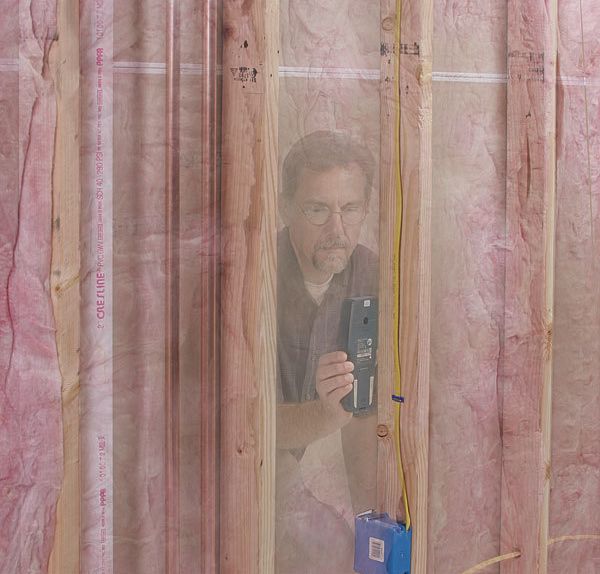Tool Test: Stud Finders and Wall Scanners
These tools can provide invaluable information, but don’t bet your job on what they tell you.

Synopsis: Although today we still rely on a little guesswork when searching for studs, plumbing, and electrical wiring behind finished walls, we now have tools that early builders and homeowners couldn’t have imagined. The simplest of these use rare-earth magnets to locate the fasteners that connect surface materials to the underlying framing. Electronic stud finders can locate wood and metal studs, as well as objects like metal pipes, but they don’t distinguish among them. The best tools are multiscanners, which add a separate metal-scan mode with an impedance measurement. Author Andy Beasley used five stud finders and five wall scanners to detect wood and metal studs, steel conduit, copper and ABS pipe, PEX tubing, and nonmetallic sheathed cable behind four types of walls: drywall, beadboard over drywall, plaster over wood lath, and ceramic tile over cement backerboard.
The first home in the United States built with studs is generally believed to have been erected in 1833. The exact date that remodelers first began tapping on walls and wishing for an accurate way to locate studs is not recorded, but I’d suppose it was around 1834. Although today we still rely on a little guesswork when searching for hidden objects, we now have technical capabilities that those early builders and homeowners couldn’t have imagined. Modern tools can find studs, plumbing, and live electrical wiring.
Three types to choose from
The simplest of these tools use rare-earth magnets to locate the fasteners connecting surface materials to the underlying framing. If those don’t get the job done, we can turn to electronic stud finders, which rely on a capacitance sensor to measure surface density. These are designed to locate wood and metal studs immediately behind a surface, but they also can pinpoint other inhabitants of a wall cavity — like metal pipes. It’s important to remember that basic electronic stud finders display all objects as studs; it’s left to the user’s judgment to determine what is a stud and what isn’t. The best tools are multiscanners, which add a separate metal-scan mode with an impedance measurement. Finally, almost all the electronic tools incorporate an additional sensor that detects the electromagnetic field generated by live, unshielded AC wiring.
The test is finished now, so if anyone is building a very small house and needs a few walls, I might have what you need.
How we tested
I built four miniature walls to simulate the variety of challenges a scanner might face in the real world. The first wall — sort of a kiddie pool for stud finders — had lightly textured, 1⁄2-in. drywall. I cranked the level of difficulty up a notch with the second wall, adding a layer of 1⁄4-in. pine beadboard to a 1⁄2-in. drywall substrate. The third mock-up had a thick (9⁄16 in.) coat of plaster over 5⁄16-in.-thick wood lath. The fourth hurdle — which proved to be a significant one — featured ceramic tile over 1⁄2-in. cement backerboard.
I put each tool through the same test on all four walls. I hunted for wood and metal studs, steel conduit, copper and ABS pipe, and PEX tubing. I slipped in various types of insulation to see how well the tools ignored these obstacles. Finally, I ran a length of nonmetallic sheathed cable — energized with live AC current — at various depths and locations to test the tools’ AC-sensing capabilities.
For more photos and details, click the View PDF button below:
Fine Homebuilding Recommended Products
Fine Homebuilding receives a commission for items purchased through links on this site, including Amazon Associates and other affiliate advertising programs.

8067 All-Weather Flashing Tape

Handy Heat Gun

Affordable IR Camera






















